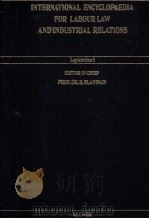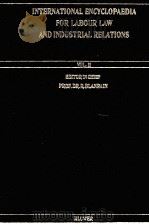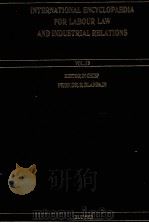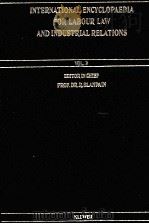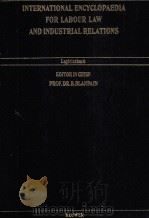《INTERNATIONAL ENCYCLOPAEDIA FOR LABOUR LAW AND INDUSTRIAL RELATIONS VOL.12》
| 作者 | EDITOR IN CHIEF AND PROF.DR.R. 编者 |
|---|---|
| 出版 | KLUWER |
| 参考页数 | 1244 |
| 出版时间 | 1998(求助前请核对) 目录预览 |
| ISBN号 | 无 — 求助条款 |
| PDF编号 | 813698638(仅供预览,未存储实际文件) |
| 求助格式 | 扫描PDF(若分多册发行,每次仅能受理1册) |
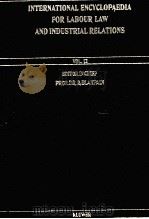
The Authors3
Introduction13
1. GENERAL FEATURES13
Ⅰ. Geography13
Ⅱ. Social and State Organization13
A. General Data13
B. Fundamental Rights and Duties of the Citizens13
C. State Organs14
Ⅲ. Population and Workforce16
Ⅳ. Statistical Data16
2. DEFINITIONS AND NOTIONS19
Ⅰ. The Object of Labour Law19
A. Labour Relations Resulting from the Employment Contract19
B. Related Legal Relations20
1. Organization of Vocational Training20
2. Organization of Work21
3. Safety at Work21
4. Trade Unions21
5. Labour Jurisdiction21
6. The State's Social Security System22
C. Definition of the Object of Labour Law22
Ⅱ. Characteristics of Romanian Labour Law22
3. THE HISTORICAL BACKGROUND24
Ⅰ. Stages of the Codification of Labour Law24
A. The Main Rules Governing Working Conditions between 1865-194424
B. The Shaping and Development of Socialist Labour Law25
1. The Period from 23 August 1944 to 8 June 195025
2. The First Labour Code of 8 June 1950. Important Laws Regarding Labour Relations Enacted During the Period 1950-197227
3. The Second Labour Code of November 197227
4. Methods of Regulation28
C. The Development of the Right to Work after the 1989 Revolution29
1. Introductory Considerations29
2. Distinctive Features of the First Stage29
3. Characteristics of the Second Stage32
D. Principles of Labour Law33
1. The Right to Work33
2. Labour Discipline34
3. Improving Vocational Training35
4. The Right to Rest35
5. Safety at Work36
6. The Right to Social Security36
4. SOURCES OF LABOUR LAW38
Ⅰ. Sources in Common with Other Branches of Law38
Ⅱ. The Rules of Social Behaviour in Society39
Ⅲ. Sources Specific to Labour Law39
A. Collective Labour Contracts39
B. Statutes on the Employees of State-owned Firms and Governmental Organizations40
C. Technical Rules40
D. Work Rules and Operational Regulations40
Selected Bibliography43
1. GENERAL BOOKS43
2. SPECIALIST BOOKS43
3. STUDIES AND ARTICLES44
Part Ⅰ. The Individual Employment Relationship45
CHAPTER 1. INDIVIDUAL EMPLOYMENT CONTRACTS45
1. General Notions45
2. Legal Capacity45
3. Limitations46
4. Consent46
5. Object and Purpose of Employment Contracts46
6. Content47
7. Requirements for Concluding an Employment Contract47
Ⅰ. Training and Length of Service47
Ⅱ. Examinations48
Ⅲ. Medical Examinations49
8. Duration49
Ⅰ. Contracts of Indefinite Duration49
Ⅱ. Fixed Term Contracts49
9. Form50
CHAPTER 2. WORKING TIME AND HOLIDAYS52
1. Working Time52
Ⅰ. Definition. Classification52
Ⅱ. Organizing Working Time52
Ⅲ. The 8-Hour Working Day53
Ⅳ. The Less than 8-Hour Working Day53
Ⅴ. Night Work54
Ⅵ. Additional Hours55
2. Leisure Time56
Ⅰ. Rest Periods other than Annual Leave56
A. Lunch Breaks56
B. Leisure Period between Two Working Days56
C. Weekly Rest56
D. Statutory Public Holidays and other Rest Days57
Ⅱ. Annual Leave57
A. The Importance of Annual Leave. Short History of its Regulation. Characteristic Features57
B. Duration of the Basic Leave and Duration of the Leave Granted to Young People under the Age of 1859
C. Additional Annual Leave59
D. Conditions for Obtaining and Fulfilling Entitlement to Annual Leave60
E. Taking Annual Leave61
F. Leave Allowance63
G. Payment in lieu of Annual Leave63
Ⅲ. Other Leave64
A. The Notion of 'Other Leave'64
B. Leaves with Pay and Leaves without Pay64
CHAPTER 3. WAGES67
1. Introductory Notes67
Ⅰ. The Idea of Pay67
Ⅱ. The Normative Framework Applied to Payment67
Ⅲ. Gross Minimum Pay at National Level68
2. The Remuneration System69
Ⅰ. Notion69
Ⅱ. The Principles of the Remuneration System70
A. Equal Remuneration for Equal Work70
B. Different Remuneration according to Level of Education70
C. Different Remuneration according to the Employee's Position70
D. Different Remuneration according to the Quality and Quantity of Work71
E. Different Remuneration according to Working Conditions71
F. The Confidential Character of Remuneration72
Ⅲ. The Forms of Remuneration72
3. Methods of Remuneration72
Ⅰ. Commercial Enterprises and Independent State Agencies without a Special Character72
Ⅱ. Remuneration in Independent State Facilities74
Ⅲ. The Pay within Budgetary Enterprises77
A. Remuneration according to Skill79
B. Increases to the Basic Pay79
C. Bonuses80
4. The Indexation and Compensation of Remuneration80
Ⅰ. The Indexation of the Remuneration80
Ⅱ. The Remuneration Compensation81
5. The Payment of Remuneration82
CHAPTER 4. JOB SECURITY84
1. The Concept of Job Security84
2. Continuity of Employment84
3. Changes in Employment Contracts85
Ⅰ. Changes by an Agreement between the Employee and the Enterprise or Institution85
Ⅱ. Cases where the Enterprise or Institution can Unilaterally Modify the Employment Contract86
A. Delegation86
B. Secondment87
C. Temporary Transfer to Another Post88
4. Suspension of an Employee89
5. Termination of the Employment Contract90
Ⅰ. Termination by Agreement of the Parties91
Ⅱ. Termination by the Employee91
Ⅲ. Termination by the Enterprise or Institution91
A. Termination for Reasons not Imputable to the Employee92
B. Termination for Reasons Imputable to the Employee93
C. Other Aspects of Termination by the Enterprise or Institution93
Ⅳ. Consequences of the Termination of an Employment Contract94
A. Consequences Common to all Cases of Termination94
B. Consequences Specific to Certain Cases of Termination95
CHAPTER 5. SETTLEMENT OF DISPUTES97
1. Definition and Concepts97
Ⅰ. The Notion of Labour Jurisdiction97
Ⅱ. Principles of Jurisdiction over Labour Disputes97
Ⅲ. Bodies Competent to hear Labour Disputes98
Ⅳ. The Parties to Labour Disputes98
2. The Settlement of the Disputes by the Judge's Court100
Ⅰ. Material Responsibility100
Ⅱ. Territorial Competence101
Ⅲ. Executing Judgment. The Decisions. The Means of Challenging a Decision102
3. The Settlement of Labour Disputes by the Other Judicial Bodies103
Ⅰ. Explanations with regard to Competence103
Ⅱ. The County Tribunals and the Tribunal of Bucharest Municipality103
Ⅲ. The Courts of Appeal103
Ⅳ. The High Court of Justice104
4. Settlement of Complaints or Legal Contests regarding Disciplinary Sanctions by the Disciplinary Councils or Discipline Boards105
Ⅰ. Preliminary Specifications105
Ⅱ. Settlement of Complaints or Legal Contests, Stipulated in the Disciplinary Statute in the Transportation Units, by the Discipline Councils105
Ⅲ. Settlement of the Magistrates' Legal Contests by the Supreme Court of Justice106
Ⅳ. The Settlement of Complaints or Legal Contests by the Discipline Colleges of the Sanitary Personnel106
5. The Settlement of Legal Contests against the Sanctions Applied to Teaching Staff107
6. The Settlement of some Labour Disputes by the Court of Accounts107
Ⅰ. The Organization and the Function of the Court of Accounts107
Ⅱ. The Jurisdictional Duties of the Court of Accounts and the Classification of the Disputes under its Competence108
Ⅲ. The Investing of the Tribunals of the Court Of Accounts. The Development of the Judgment109
Ⅳ. The Decisions and Possibilities for Challenges. The Execution of the Decisions109
Part Ⅱ. Collective Labour Relations111
CHAPTER 1. TRADE UNIONS111
1. Introduction111
Ⅰ. Definition and General Characteristics of the Unions111
Ⅱ. A Short History of the Constitution and the Development of Unions in Romania112
2. Trade Union Freedom115
Ⅰ. Content. Forms. Sources115
Ⅱ. The Individual Trade Union Freedom. The Categories of Persons who Have Trade Union Freedom116
Ⅲ. The Collective Trade Union Freedom118
Ⅳ. The Protection and the Granting of Trade Union Freedom120
3. The Juridical System of the Trade Unions120
Ⅰ. The Object of the Trade Union Activity120
Ⅱ. Trade Union Establishment121
Ⅲ. Consequences of the Legal Personality of Trade Unions122
Ⅳ. Trade Union Pluralism124
Ⅴ. Trade Union Association and Affiliation126
Ⅵ. Trade Union Democracy127
Ⅶ. Trade Union Discipline127
Ⅷ. Dissolution and Reorganization of Trade Unions128
4. Trade Union Action129
Ⅰ. The Representative Character of Trade Unions129
Ⅱ. The Defence of the Employees' Interests129
Ⅲ. Claiming Actions of the Trade Unions130
CHAPTER 2. THE COLLECTIVE LABOUR CONTRACT132
1. Introduction132
Ⅰ. The Definition of the Collective Labour Contract132
Ⅱ. Choice of Terminology Collective Labour Contract132
Ⅲ. The Legal Nature of the Collective Labour Contract133
Ⅳ. The Importance of the Collective Labour Contract134
Ⅴ. A Brief History of the Collective Labour Contract in Romania135
Ⅵ. Categories of Collective Labour Contracts137
2. Contents of the Collective Labour Contracts137
Ⅰ. Common Stipulations for all Types of Collective Labour Contracts137
Ⅱ. The Contents of the Collective Labour Contract at National Level138
Ⅲ. The Contents of the Collective Labour Contracts at Other Levels140
3. The Conclusion of the Collective Labour Contracts141
Ⅰ. Is the Conclusion of a Collective Labour Contract Compulsory?141
Ⅱ. Collective Negotiation. Concept. Functions142
Ⅲ. The Participants in the Negotiation143
Ⅳ. The Procedure of Concluding The Collective Labour Contracts146
Ⅴ. Duration of Collective Labour Contracts147
Ⅵ. The Form of the Collective Labour Contract148
4. The Registration and Effects of Collective Labour Contracts148
Ⅰ. The Registration of Collective Labour Contracts148
Ⅱ. The Effects of Collective Labour Contracts150
5. Interpretation and Execution of Collective Labour Contracts151
Ⅰ. Interpretation of Collective Labour Contracts151
Ⅱ. The Execution of Collective Labour Contracts152
6. The Amendment, Suspension and Cessation of Labour Contracts152
Ⅰ. The Amendment of the Collective Labour Contracts152
Ⅱ. Suspension of Collective Labour Contracts153
Ⅲ. Cessation of Collective Labour Contracts154
CHAPTER 3. COLLECTIVE LABOUR DISPUTES AND STRIKES155
1. Introduction155
Ⅰ. The Concept of Collective Labour Disputes155
Ⅱ. The Parties to the Collective Labour Dispute156
Ⅲ. Matters that Cannot be the Object Of Collective Labour Disputes157
Ⅳ. A Brief Historical Background regarding the Settlement of Collective Labour Disputes in Romania157
2. The Settlement of Collective Labour Disputes159
Ⅰ. Introduction159
Ⅱ. Direct Reconciliation of Collective Labour Disputes160
Ⅲ. Reconciliation Organized by the Ministry of Labour and Social Protection160
3. Introductory Considerations Regarding Strikes and the Right to Strike163
Ⅰ. The Definitions and the Characteristics of Strikes163
Ⅱ. The Right to Strike164
Ⅲ. Types of Strikes164
4. Calling a Strike165
Ⅰ. Conditions for Calling a Strike165
Ⅱ. The Resolution to Call a Strike166
Ⅲ. Categories of Employees who are Prohibited from Calling a Strike166
Ⅳ. Calling a Strike on Condition of Ensuring Vital Public Services167
Ⅴ. Injunction of the Beginning or of the Continuation of a Strike167
5. Carrying on a Strike168
Ⅰ. Participation in a Strike168
Ⅱ. Non-Striking Employees Continuing to Work169
Ⅲ. Duties Laid on the Strike Co-ordinators and Establishment Administration during the Strike169
6. Cessation of a Strike170
Ⅰ. Renunciation170
Ⅱ. The Parties' Agreement170
Ⅲ. Court Decision170
Ⅳ. Decision of the Arbitration Commission173
7. Juridical Responsibility for Breach of Legal Provisions on Calling and Ending a Strike174
Ⅰ. Criminal Responsibility174
Ⅱ. Patrimonial Responsibility175
Ⅲ. Other Forms of Juridical Responsibility176
Index177
1998《INTERNATIONAL ENCYCLOPAEDIA FOR LABOUR LAW AND INDUSTRIAL RELATIONS VOL.12》由于是年代较久的资料都绝版了,几乎不可能购买到实物。如果大家为了学习确实需要,可向博主求助其电子版PDF文件(由EDITOR IN CHIEF AND PROF.DR.R. 1998 KLUWER 出版的版本) 。对合法合规的求助,我会当即受理并将下载地址发送给你。
高度相关资料
-
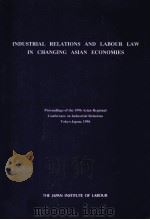
- Industrial relations and labour law in changing Asian economies.
- 1996 Japan Institute of Labour
-
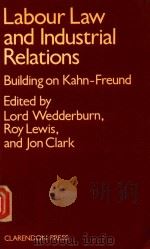
- LABOUR LAW AND INDUSTRIAL RELATIONS
- 1983 CLARENDON PRESS OXFORD
-
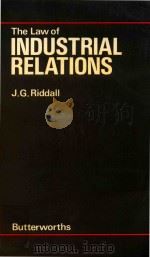
- THE LAW OF INDUSTRIAL RELATIONS
- 1981 LONDON BUTTERWORTHS
-
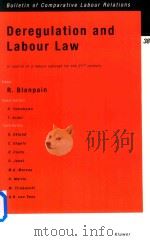
- Deregulation and Labour Law
- 1998 Kluwer
-

- STUDIES IN INTERNATIONAL LAW AND RELATIONS
- 1928 CAMBRIDGE
-
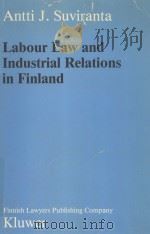
- LABOUR LAW AND INDUSTRIAL RELATIONS IN FINLAND
- 1987 FINNISH LAWYERS PUBLISHING COMPANY
-
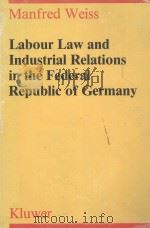
- LABOUR LAW AND INDUSTRIAL RELATIONS IN THE FEDERAL REPUBLIC OF GERMANY
- 1987 KLUWER LAW AND TAXATION PUBLISHERS
-
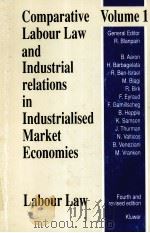
- COMPARATIVE LABOUR LAW AND INDUSTRIAL RELATIONS IN INDUSTRIALISEED MARKET ECONOMIES LABOUR LAW VOL
- 1990 KLUWER LAW AND TAXATION PUBLISHERS
-
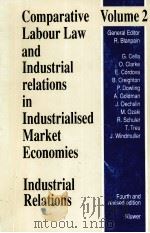
- COMPARATIVE LABOUR LAW AND INDUSTRIAL RELATIONS IN INDUSTRIALISEED MARKET ECONOMIES INDUSTRIAL RELA
- 1990 KLUWER LAW AND TAXATION PUBLISHERS
提示:百度云已更名为百度网盘(百度盘),天翼云盘、微盘下载地址……暂未提供。➥ PDF文字可复制化或转WORD
